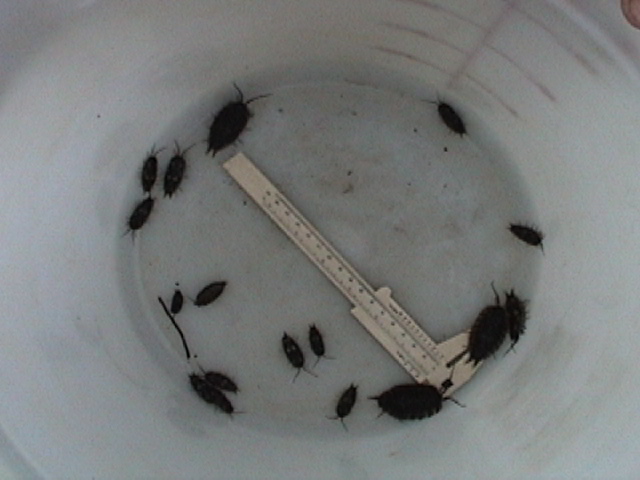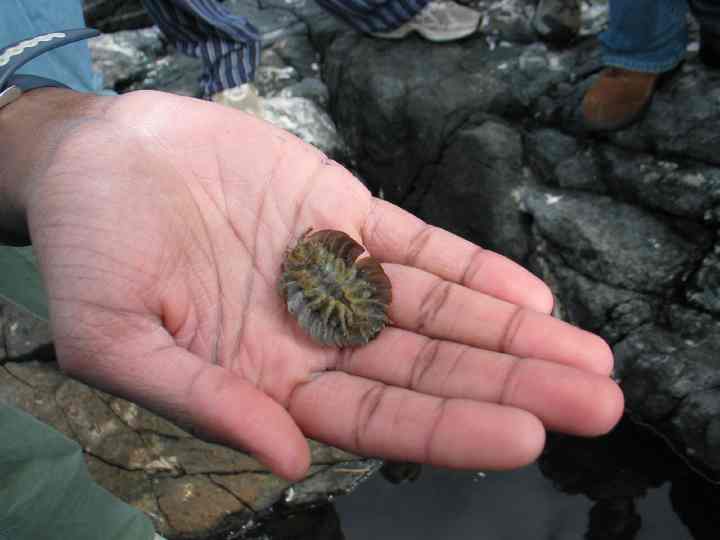video of sampling of populations of Ligia sp
During the Johan Ashuvud project 2004, students explored the intertidal with Garry. They examined various organisms as well as the artificial tidepool.
In this video, we also get a chance to meet all the students taking part in the project
The central part of this video has a section on Ligia sp.
-

-
Sample 1 . Three populations used by Mersiha in her extended essay
-

-
Sample 2 These samples are included here to give an indication of the variation in specimen size within each population
-

-
Sample 3 The 1 cm. divisions can be seen on the caliper for size estimation.
-

-
Dorsal view
-

-
Ventral view
Sexual dimorphism in body proportions is marked in L.pallasii. Males, with their large, laterally expanded ephemeral plates, have a length/width ratio of about 1.6; females and immature males are narrower, with a corresponding ratio of about 2.1. Half- moulted males are occasionally found in which the rear half of the body has moulted and is abruptly significantly wider than as yet unmoulted front half, an odd sight, usually several days after the posterior moult.On the walls of cliffs and sea caves, the larger and broader males often cover and shield the females and juveniles.
L.Pallassi prefers sea cliffs. At Race Rocks, the loose upper intertidal rocks and crevasses on the Western side of the main island provide ideal habitat. There are differences in the osmoregulatory responses shown by these species associated with their behavior and ecology.The slower -moving pallasii lives permanently in cool, moist habitats characterized by fluctuating hypo-saline condition. L.Pallasii are air breathers with gill-like pleopods not equipped with tracheal trees.The respiratory pleopods must be kept moist to function properly.This is done by immersion or by dipping the tail in water in such away that the uropods serve as capillary siphons.
Ligia species are fed upon by birds, especially gulls, and by the intertidal crab. Life span of L.pallasii is 1.5 to 2 years , with breeding occurring in spring and early summer, and the average brood size is 48 plus or minus 11 young.The overall sex ratio is 1:1.
Domain Eukarya
Kingdom Animalia
Phylum or Division Arthropods
Class Crustacea (crustaceans)
Order Isopoda
Family Ligiidae
Genus Ligia
Species pallasii
COMMON NAME:sea slater
 The Race Rocks taxonomy is a collaborative venture originally started with the Biology and Environmental Systems students of Lester Pearson College UWC. It now also has contributions added by Faculty, Staff, Volunteers and Observers on the remote control webcams. Dec 2005- Palwasha Hussain Khel The Race Rocks taxonomy is a collaborative venture originally started with the Biology and Environmental Systems students of Lester Pearson College UWC. It now also has contributions added by Faculty, Staff, Volunteers and Observers on the remote control webcams. Dec 2005- Palwasha Hussain Khel |









